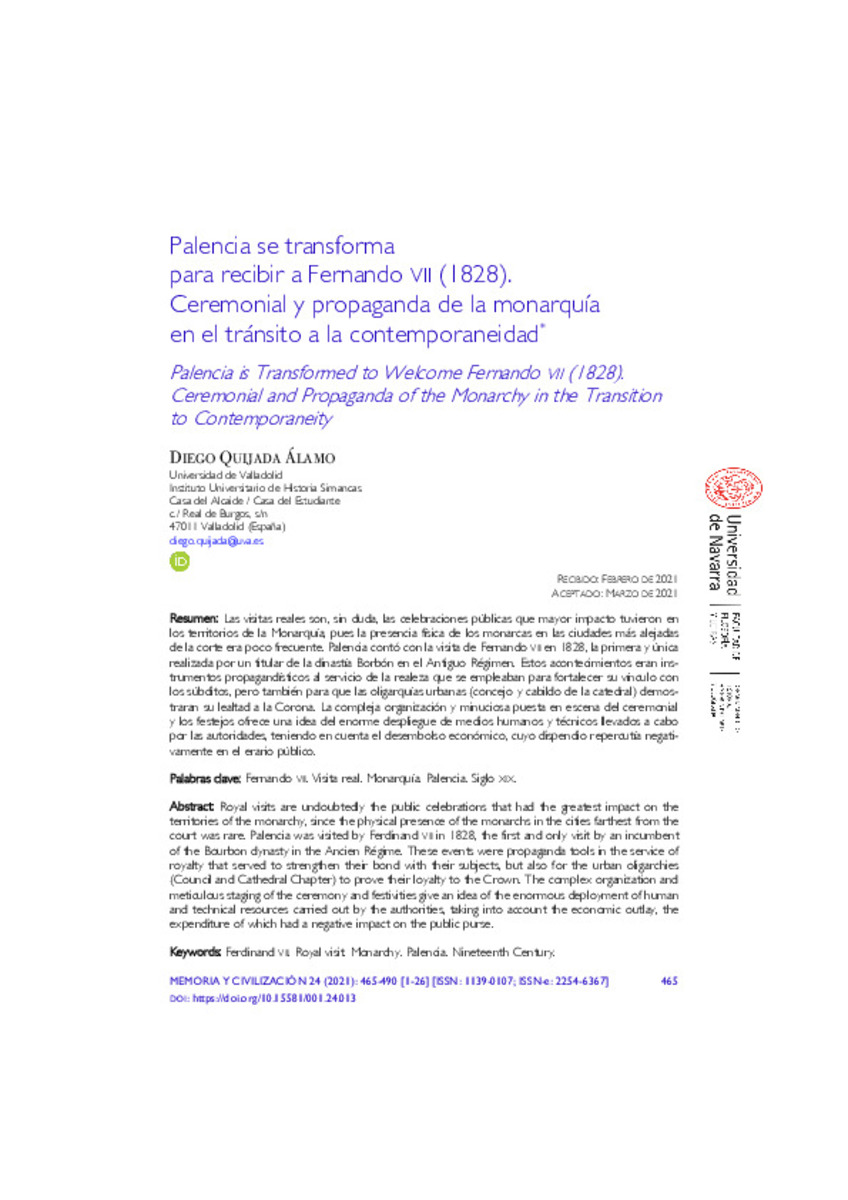Palencia se transforma para recibir a Fernando VII (1828). Ceremonial y propaganda de la monarquía en el tránsito a la contemporaneidad
Other Titles:
Palencia is Transformed to Welcome Fernando VII (1828). Ceremonial and Propaganda of the Monarchy in the Transition to Contemporaneity
Keywords:
Fernando VII
Visita real
Monarquía
Palencia
Siglo XIX
Publisher:
Servicio de Publicaciones de la Universidad de Navarra
Citation:
Quijada-Álamo, D. (Diego). "Palencia se transforma para recibir a Fernando VII (1828). Ceremonial y propaganda de la monarquía en el tránsito a la contemporaneidad". Memoria y Civilización. 24, 2021, 465 - 490
Statistics and impact
0 citas en

0 citas en

Items in Dadun are protected by copyright, with all rights reserved, unless otherwise indicated.








